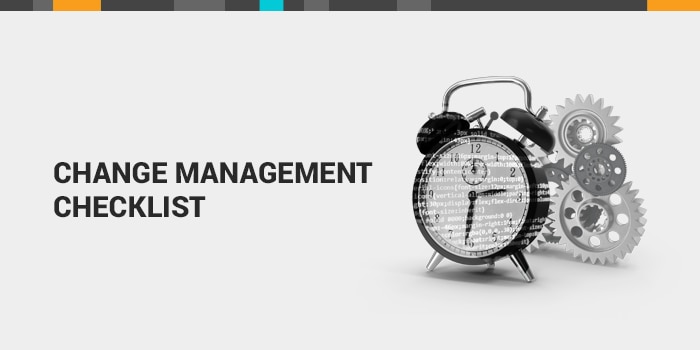For many businesses, one of their ultimate goals is to provide excellent services to their customers. But what about the employees facilitating the customer experience?
Today’s employees are more reliant than ever on technology to help them do their jobs effectively, which in turn enables them to better serve external customers. And let’s face it, employees are customers, too.
How can companies provide a positive
employee experience with the technology they use daily? Enter IT service management (ITSM). A modern, easy-to-use ITSM platform can enable smoother communication between employees and internal service providers—from IT to HR and beyond. It can give employees convenient access to resources and support no matter where they are or what device they’re using. It can also give employees the tools they need to answer their questions or resolve their issues on their own.
A robust IT service management strategy equips IT teams and other internal service providers with a streamlined process for more effectively tracking and managing incoming requests and issues. In this post, we’ll cover what ITSM is, how the ITIL framework drives service delivery processes, benefits of ITSM, and tips for choosing the right ITSM solution for your needs.
What Is IT Service Management?
The goal for IT service management is to efficiently service internal customers—employees. ITSM is not just the technology used to manage your services. It’s the combination of people, processes, and technology helping users execute business-related tasks.
Axelos calls ITSM “a cultural mindset to ensure the desired outcome for the business is achieved.” In order to achieve this outcome, IT service pros generally align their ITSM strategy with ITIL best practices, since
ITIL is often viewed as the gold standard framework for ITSM.
Supporting ITSM With ITIL
From the
guiding principles of ITIL to the fundamental ITIL practices of
incident,
problem,
change, and
release management, IT service management strategy can greatly benefit from aligning with the ITIL framework.
Essentially, ITIL acts as a guideline for service delivery in the IT world—aligning ITSM services with the objectives of the business. It focuses on continual improvement of services, since the needs of the business and technology are always evolving.
The framework is divided into five stages: service strategy, service design, service transition, service operation, and continual service improvement. These stages help answer:
- How can my IT department succeed over a long period of time?
- How can I plan my IT resources around my business?
- How can I best transition an IT project over to a service for users?
- How can my IT department meet SLAs?
- How can my department become more efficient?
By answering these questions, IT teams are better equipped to establish a robust IT service management strategy, not only to benefit the IT department but to help drive business goals and employee satisfaction.
Benefits of IT Service Management
Ultimately, the goal of ITSM is to enable organizations to deliver quality services to the business and employees as efficiently and effectively as possible. A powerful IT service management solution can help simplify daily tasks, automate cross-departmental workflows, provide employees with easy access to resources, budget for technology needs, and more.
At a glance, here are some of the top benefits an ITSM solution can offer:
- Improved Communication. Transitioning away from lengthy email threads and manually updated spreadsheets, instead shifting to a comprehensive platform can unify IT with other service providers and the employees requesting and receiving said services. Establishing SLAs can help service providers set clear expectations and avoid the lingering question of, “when will my issue be resolved?”
- Seamless Employee Experience. With a “one-stop shop” service portal, an ITSM solution can conveniently connect employees to resources they might need regardless of which department is the provider. Do-it-yourself (DIY) employees can even access self-service knowledge articles, which can prevent some tickets from ever hitting IT’s queue.
- Efficient Service Delivery. Automated workflows, ticket routing, asset tracking, and alignment between IT assets and IT services enables more streamlined ITSM processes and service delivery.
Tips for Finding the Right ITSM Solution
Like with most big-buying decisions, it’s good to do your homework once you’ve determined your organization can benefit from an ITSM solution. Are you getting started with the ticketing basics? What other business applications are you using and can they integrate? Here are a few steps to guide you when selecting the best ITSM tool for your needs.
- Assess your organization’s IT maturity. This will help you understand which processes you need your ITSM tool to support.
- Determine the best ITSM features for your organization’s IT maturity level. While it may be challenging to find a comprehensive tool to satisfy business needs without duplicating existing solutions, identifying the best possible solution for your needs will pay dividends in the long run.
- Evaluate your licensing and hosting needs. Will you need a cloud-based tool, or something on-premises? Make sure to evaluate your options from both the perspective of immediate cost for level of service and what you’ll spend over time for each solution.
- Evaluate and compare vendors. Get feedback from peers in your industry about their ITSM tools. Ask them what works for them and if there’s anything missing from what they have. Also ask if they would make the same choice again. Review sites like TrustRadius®, G2®, and Gartner® can also be a valuable resource.
- Make a selection with your customer in mind. One of the most important parts of IT decisions is keeping the “customer” in mind. After all, the success of the ITSM tool you choose correlates directly to your employees’ experience with it.







